All about draining the site
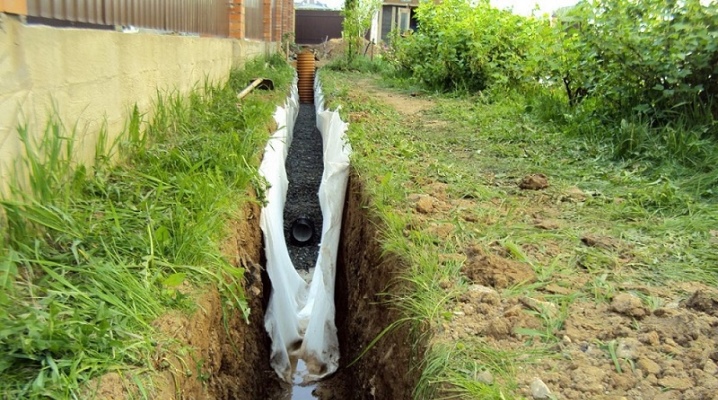
Excessive moisture on the garden plot prevents a large harvest, and also interferes with some construction work. You can drain the site on your own. In order for the process to end with a good result, it is necessary to adhere to some rules, as well as find out the reason for the appearance of excess moisture.
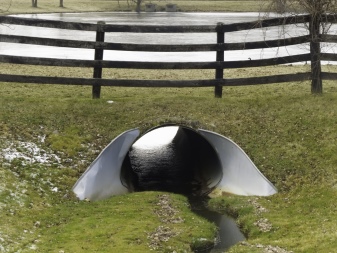
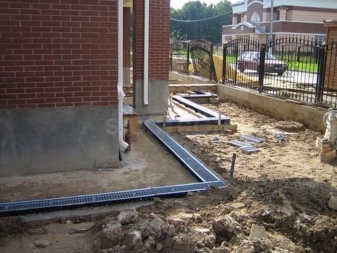
Why is it necessary?
In most cases, excess moisture in a personal plot is formed when water does not seep into the ground during prolonged rains or floods. And water does not leave for two reasons: clay soil and a high level of groundwater. And if the site is located in a lowland, then additional water flows down onto it from above. The moisture level of the soil is to some extent affected by the presence of any water bodies in the immediate vicinity, for example, ponds, streams or swamps.
The active appearance of moisture is manifested in the off-season period in spring or autumn. It is at this time that you can mark those areas in which moisture accumulates to a greater extent.
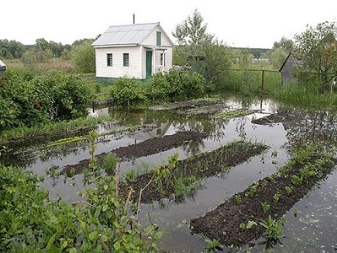
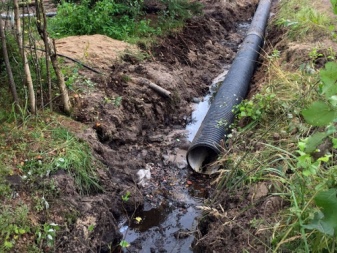
When the site is acquired in the summer, high humidity can be detected by the following signs:
- there are cracks on the walls of the house, window frames and doorways may be skewed;
- there are traces of mold in the corners and shaded areas, there is also a specific putrid smell;
- there is water in the basement;
- on the territory of the site, you can see clusters of mosquitoes, as well as frogs and even snakes;
- the vegetation on the site is dominated by such plants as nettles, wormwood, wood lice, reeds and hemlock.
To live normally, to plant vegetables and fruit trees, the swampy summer cottage must be drained.
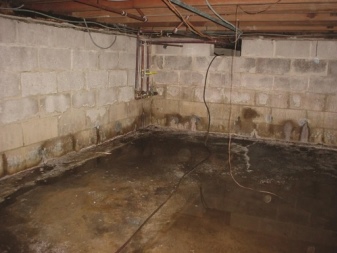
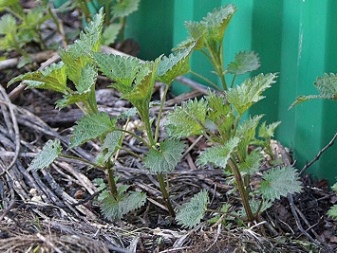
What should be considered?
If there are buildings and plantings on the site, and the soil contains excessive moisture, it must be drained. Before choosing a method of carrying out the procedure, it is recommended to study the following factors:
- which is why excessive moisture occurs;
- soil features;
- the depth of occurrence of groundwater, as well as the direction of their flow;
- presence in the immediate vicinity of water bodies;
- area of the treated area;
- the presence of plantings and buildings.
After everything has been studied, you can proceed to choosing a method for draining the soil.
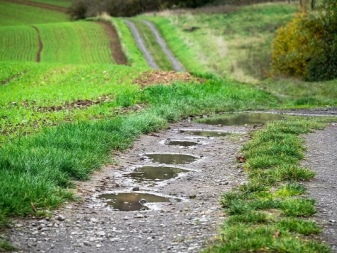
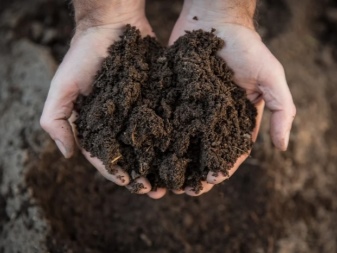
Overview of methods
The wetland can be drained in different ways. The choice of method depends precisely on the reason for the appearance of excess moisture. Each method has its own distinctive characteristics.
Drainage systems
Installation of drainage systems on a land plot is rational if the reason for the appearance of excess moisture is the presence of nearby reservoirs. The drainage system ensures the drainage of excess water. Usually they make a closed or open type of drainage system. There are two more schemes - deep and point drainage, but due to the complexity they are equipped much less often. An open drain is a series of sloped ditches. Through them, water flows into specially equipped wells. And you can also make an outflow outside the site. The distance between the wells must be at least 6 meters. Besides, it is not recommended to put any buildings around them, as this can lead to deformation of the foundation.
Backfill drainage is another option. Special geotextiles are laid on the bottom of the ditches, and then they are covered with gravel by about 2/3. From above, the ditches are covered with either fine gravel or soil.
This method will be most effective if the clay type of soil prevails on the site.
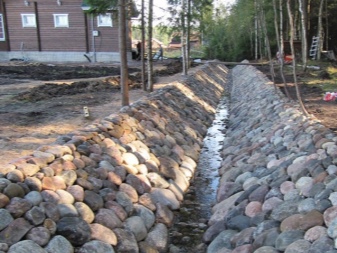

Among the disadvantages of such a system, it should be noted that the drainage system occupies a potentially useful place on the site. Moreover, such ditches very quickly become clogged with all kinds of debris, for example, fallen leaves, so they have to be cleaned regularly. A closed drainage system is more efficient, but somewhat more difficult to create. Such a system is very effective in lowering the water table. Closed drainage allows not only to get rid of excess moisture, but also prevents its further appearance.
Closed drainage is a complex system consisting of specialized PVC pipes that are buried in the ground. Small holes are pre-drilled in the pipes through which water flows. In order to prevent pipe clogging, it is also necessary to pre-wrap them with special geotextiles. With the help of these pipes, water can be diverted outside the site. It is noteworthy that the pipes must be buried to a depth to which the soil does not freeze.
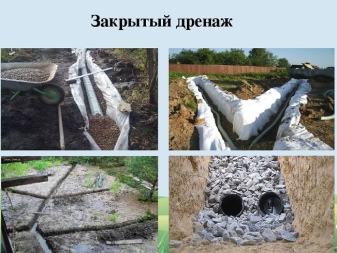
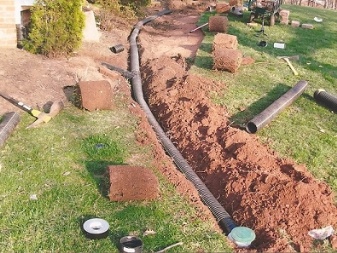
Moisture drainage channels
If the drainage system cannot be made for some reason, you can equip channels for water drainage. These canals can be artificially created streams and ponds, into which canals will be dug for water to drain.
The method is quite simple and inexpensive. Ponds and streams can become not only a reservoir for water flow, but also a part of landscape design. Its disadvantage is the constant need to clean the ponds. If this is not done, then the reservoirs will clog up rather quickly, mud will appear in them. As a result, mosquitoes and an unpleasant swamp smell will appear.
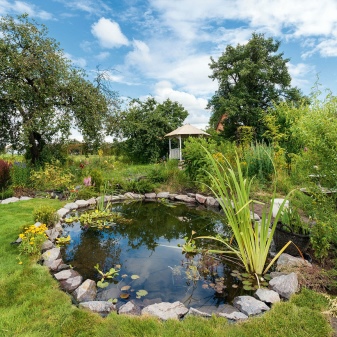

Excess water drain line
Special wells and ditches can be dug as lines to drain excess water on the site. The easiest and cheapest method is to dig small holes where moisture accumulates. If the liquid has nowhere to go, then such structures will be a quick and optimal solution to the problem. Wells must necessarily have a conical shape. It is best if the diameter of the circles is about 2 meters, and the depth is at least 1 meter.
For it is recommended to put gravel on the bottom to prevent crumbling of mini-wells. The surface can be decorated with stones or other objects of your choice. Special ditches can be dug. Compared to the previous version, this one is much more complicated, but more effective. Ditches are dug around the entire perimeter of the summer cottage. To avoid crumbling, the walls of the ditches can be reinforced with boards or special concrete slabs. Gravel, stones and cobblestones can be used as an optimal decoration.
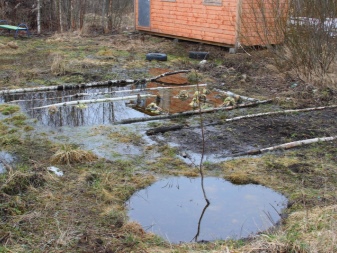
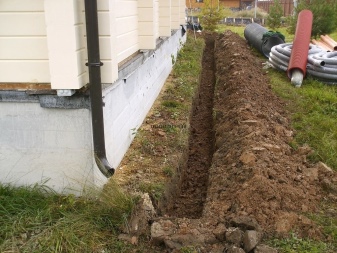
Raising the ground level
Before you start raising the soil level on the site, you need to understand what type of topographic it belongs to. There are several categories.
- Above the absolute level. Their peculiarity lies in the fact that they are located on a hill, and the groundwater is deep.
- Above the relative level. Such areas are protected from floods, since they are located in a higher part of the relief.
- Below the absolute level. This is a swampy type of site. The main danger and the main reason for the presence of excess moisture is precisely the spring floods.
- Below the relative level. On such areas, water constantly flows from those that are located above. In addition, the groundwater level is usually low, so excess moisture is almost always present on the site.
If in the first two cases, raising the ground level is required only to level the surface, then in the remaining two this procedure is required precisely to reduce the moisture level.
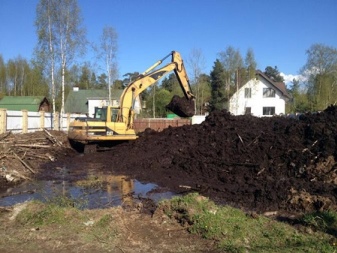
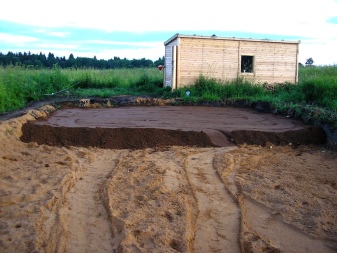
There are several ways to raise the ground level in your garden plot.
- If a slight rise is required (up to about 30 cm), then the method of filling dense loamy soil is often used. It must be distributed to the required areas, after cutting off the vegetation layer.
- If you need to raise the level by more than 30 cm, then you should use a crushed stone-sand mixture for pouring. But when laying, it must be alternated with peat layers.
- Areas with saturated soil will be helped by a set of measures called hydro reclamation.
After the performed measures, excess moisture should no longer come out to the soil surface.
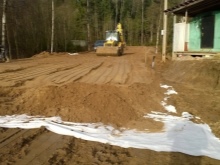
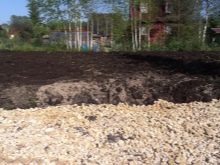
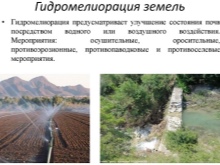
DIY Drying Tips
Very often, to drain the site, you have to seek help from specialists. Of course, all of the above methods can be done independently, but without proper skill, the result may not always meet expectations. It is much easier and cheaper to drain a plot in the country with your own hands. The ideal option would be to plant moisture-loving trees and shrubs around the perimeter of the entire site. But this method will be effective only if the site is not very swampy. And also it is necessary to take into account the fact that it will take some time to drain, since the plants must first take root, and only then they will begin to perform their function.
It is rational to plant the following as moisture-loving trees on the site:
- Birch;
- alder;
- poplar;
- willow;
- maple.

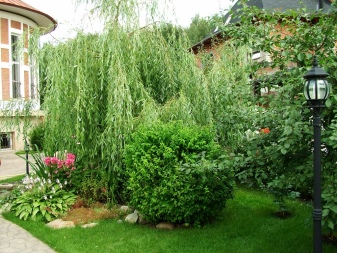
Trees take root for a long time, and at the initial stage they will not take as much water from the ground as they would like. If you need to drain the site in a shorter time, then you should think about planting shrubs. The most hygrophilous of them are the following:
- irga;
- viburnum;
- rose hip;
- hawthorn.
It is noteworthy that the plants will not only take away excess moisture, but will also become a worthy decoration of any personal plot. Desiccant plants should be watered initially to allow them to adapt. Then the amount of supplied moisture should be minimized. It is important to monitor their condition during a drought. In addition, they should be planted correctly - in the immediate vicinity of places where moisture accumulates.
Using the above methods, you can drain even the most swampy areas. The main thing is to follow the rules for conducting events.





































































The comment was sent successfully.